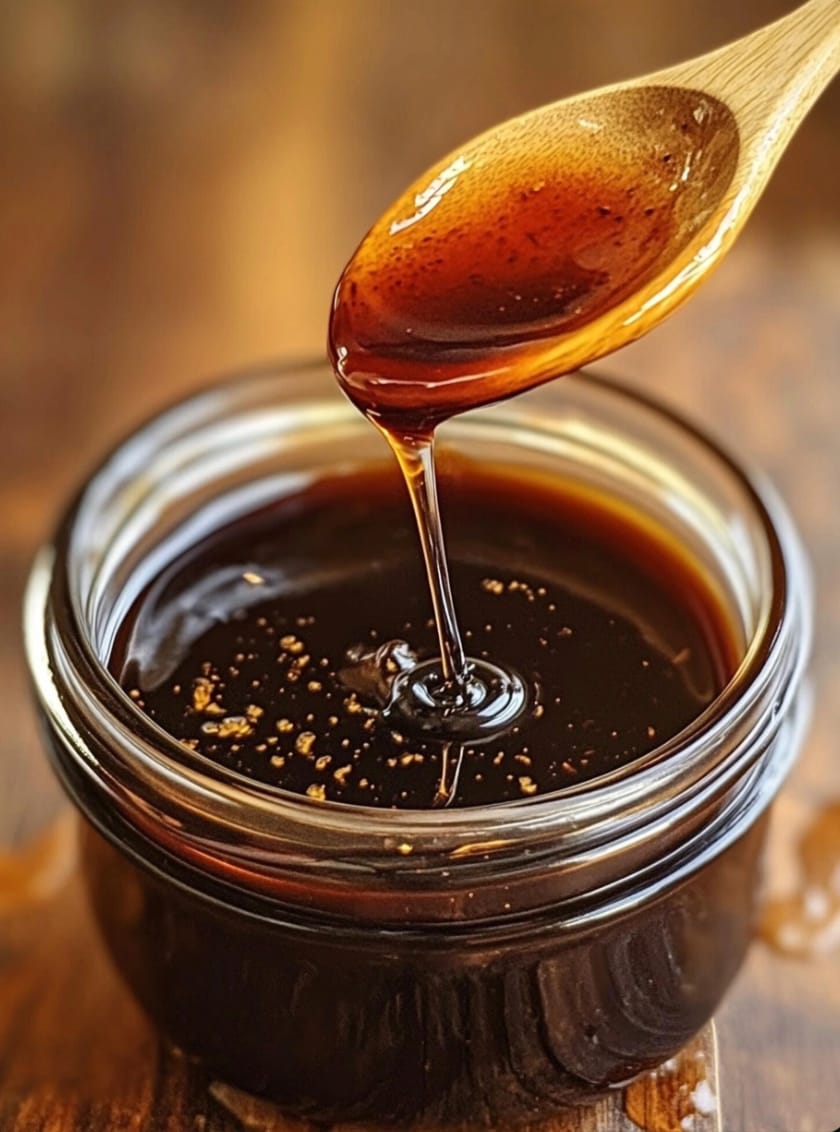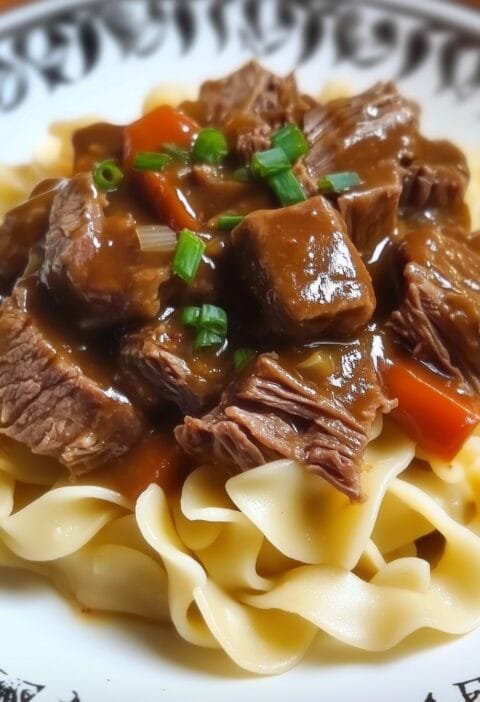Sweet & Sour Sauce is a perfect blend of tangy and sweet, ideal for dipping or adding to your favorite stir-fry dishes. This easy homemade sauce comes together in just a few minutes and is much better than store-bought versions. Whether you’re making a meal for your family or need a flavorful sauce for your next dinner party, this sweet & sour sauce will bring vibrant flavor and versatility to your cooking. Let’s get started!
Table of Contents
- Ingredients
- Instructions
- Cook’s Notes and Tips
- Variations
- Serving Suggestions
- Frequently Asked Questions (FAQs)
- Conclusion
Ingredients
- 1/2 cup rice vinegar
- 1/2 cup brown sugar
- 1/4 cup ketchup
- 1 tablespoon soy sauce
- 1/2 cup pineapple juice
- 1 tablespoon cornstarch
- 2 tablespoons water
Instructions
Make the Sauce
- Combine Ingredients: In a small saucepan, whisk together the rice vinegar, brown sugar, ketchup, soy sauce, and pineapple juice. Heat over medium heat, stirring occasionally, until the mixture begins to simmer. This combination of ingredients creates the perfect balance of sweet and tangy flavors, essential to a great sweet & sour sauce.
- Thicken the Sauce: In a small bowl, mix the cornstarch and water to create a slurry. Gradually whisk the slurry into the simmering sauce. Continue to cook, stirring constantly, until the sauce thickens, about 2-3 minutes. You’ll notice that the sauce will become glossy and take on a thick, pourable consistency—this is when it’s ready.
- Cool and Serve: Remove from heat and let the sauce cool slightly before serving. Use it immediately, or let it cool completely and store in the refrigerator for later use. The sweet & sour sauce can be served warm or cold, depending on how you want to use it.
Cook’s Notes and Tips
- Adjust Sweetness: The amount of brown sugar can be adjusted to your taste. If you prefer a tangier sauce, reduce the sugar slightly. For a sweeter sauce, add a bit more sugar. This flexibility allows you to personalize the sauce to your taste preferences.
- Consistency: If the sauce is too thick, add a little more pineapple juice or water to thin it out. If it’s too thin, continue cooking for a few more minutes to reduce it to your desired consistency. The key is to stir continuously to avoid lumps and ensure a smooth, glossy sauce.
- Cornstarch Slurry: Always mix the cornstarch with water before adding it to the hot sauce to prevent clumping. Adding cornstarch directly to the hot mixture will result in clumps that are difficult to dissolve, whereas creating a slurry allows for even distribution.
- Pineapple Juice: Fresh or canned pineapple juice both work well in this recipe. Pineapple juice adds a fruity depth to the sauce that complements the acidity from the vinegar and the sweetness of the sugar.
Variations
- Spicy Sweet & Sour Sauce: Add 1/2 teaspoon of crushed red pepper flakes or a splash of hot sauce for a spicy kick. This variation is great for those who enjoy some heat in their dishes. The sweetness balances out the spice, creating a delicious contrast of flavors.
- Garlic Flavor: Add 1 clove of minced garlic to the saucepan for extra depth of flavor. The garlic adds a savory note that enhances the overall taste, making it more robust and well-rounded.
- Fruit Twist: Substitute the pineapple juice with orange juice for a different fruity twist. The orange juice will give the sauce a slightly different citrus flavor, adding complexity and making it suitable for a variety of dishes.
- Honey Sweet & Sour Sauce: Replace the brown sugar with honey for a natural sweetness and richer flavor. Honey adds a floral note to the sauce and pairs beautifully with the tanginess from the vinegar.
Serving Suggestions
- Dipping Sauce: Use as a dipping sauce for egg rolls, chicken nuggets, fried shrimp, or spring rolls. The sauce is the perfect combination of tangy, sweet, and slightly sticky, making it ideal for dipping crispy fried foods.
- Stir-Fry: Add to stir-fried vegetables, chicken, or pork for a delicious sweet and sour stir-fry. Simply cook your protein and vegetables as usual, then pour the sauce over everything and let it coat the ingredients. Serve over rice for a complete meal.
- Glaze: Brush over grilled chicken, pork chops, or salmon for a tangy glaze. The sauce caramelizes slightly when grilled, adding a flavorful, sticky coating to your protein.
- Sweet & Sour Meatballs: Add the sauce to cooked meatballs for a quick and tasty appetizer or main course. Serve with steamed rice and garnish with sliced green onions or sesame seeds.
- Tofu Stir-Fry: This sauce works wonderfully with crispy tofu. Simply pan-fry cubes of tofu until crispy, then toss them in the sweet & sour sauce for a vegetarian dish that’s full of flavor.
Frequently Asked Questions (FAQs)
How Long Does Sweet & Sour Sauce Last?
Store the sweet & sour sauce in an airtight container in the refrigerator for up to 1 week. Reheat gently on the stove or in the microwave before using if you prefer it warm. The sauce may thicken as it cools; simply add a tablespoon of water and stir to reach your desired consistency.
Can I Use Apple Cider Vinegar Instead of Rice Vinegar?
Yes, you can substitute apple cider vinegar for rice vinegar, but it will alter the flavor slightly. Rice vinegar is milder, while apple cider vinegar has a bit more acidity. If using apple cider vinegar, consider reducing the amount slightly to maintain balance.
Can I Make This Sauce Gluten-Free?
Yes, you can make this sauce gluten-free by using a gluten-free soy sauce or tamari. Most of the other ingredients are naturally gluten-free, but be sure to check the labels on any store-bought products.
Can I Freeze Sweet & Sour Sauce?
Yes, you can freeze sweet & sour sauce. Let it cool completely, then transfer to a freezer-safe container. Freeze for up to 3 months. Thaw in the refrigerator before reheating. Freezing the sauce is a great way to always have some on hand for quick meals.
How Do I Make the Sauce Thicker?
If the sauce is too thin, mix an additional teaspoon of cornstarch with water and add it to the sauce. Cook until it reaches your desired consistency. Be sure to let the mixture simmer for a few minutes after adding the cornstarch slurry to avoid any raw cornstarch taste.
Can I Use White Vinegar Instead of Rice Vinegar?
Yes, you can use white vinegar in place of rice vinegar. However, white vinegar is stronger, so you may want to use a bit less to prevent overpowering the sweetness.
Can I Add Vegetables Directly to the Sauce?
Absolutely! You can add bell peppers, pineapple chunks, and onions to the sauce while it’s cooking. This will give you a more complex texture and flavor, making the sauce more like what you’d find in classic takeout sweet & sour dishes.
Sweet & Sour Sauce is a simple yet versatile sauce that can be used in a variety of ways. Whether used as a dip for fried appetizers, a glaze for grilled meats, or a flavorful addition to stir-fry dishes, this sauce brings the perfect balance of tangy and sweet to any meal. The best part is that you can make it in just a few minutes with ingredients you likely already have in your kitchen. Gather your ingredients, whisk, and enjoy this flavorful classic at home—it’s sure to become a staple in your cooking routine!
Happy Cooking!







I carry on listening to the reports talk about getting boundless online grant applications so I have been looking around for the best site to get one. Could you tell me please, where could i find some?
I was wondering if you ever considered changing the structure of your site? Its very well written; I love what youve got to say. But maybe you could a little more in the way of content so people could connect with it better. Youve got an awful lot of text for only having 1 or two images. Maybe you could space it out better?
The subsequent time I learn a blog, I hope that it doesnt disappoint me as a lot as this one. I mean, I know it was my choice to read, however I really thought youd have one thing attention-grabbing to say. All I hear is a bunch of whining about something that you could repair in case you werent too busy searching for attention.
You helped me a lot by posting this article and I love what I’m learning. http://www.hairstylesvip.com
I’m so in love with this. You did a great job!! http://www.ifashionstyles.com
Thanks for posting. I really enjoyed reading it, especially because it addressed my problem. http://www.kayswell.com It helped me a lot and I hope it will help others too.